Characteristics of 9 NJ132L JFET dies measured by D. Dowell, 1999 March
The sample: 9 dies, dated 3-2-93, lot #011402-2. There was no pre-selection
before mounting them in the carrier. Two devices were
unacceptable for any instrument. The other 7 were good enough for SHARC2.
Voltage noise
Here are all of the noise spectra at T = 115 K, Vd = 5V, Ids = 24 uA,
T = 115 K. Note that I am limited by the preamp noise in making precise
measurements of the JFET noise.
JFET #1
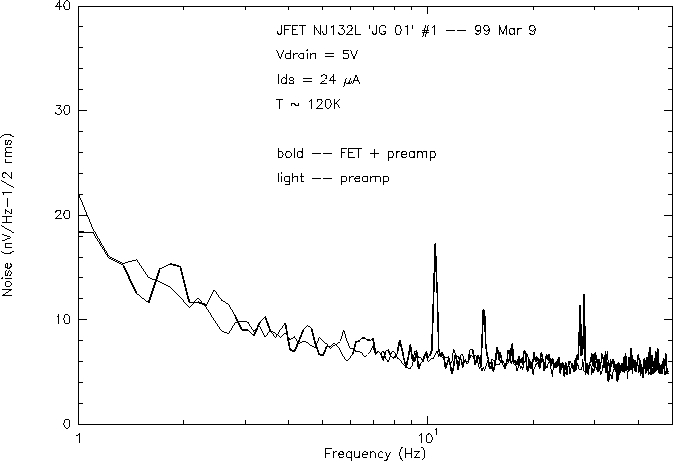 JFET #2
JFET #2
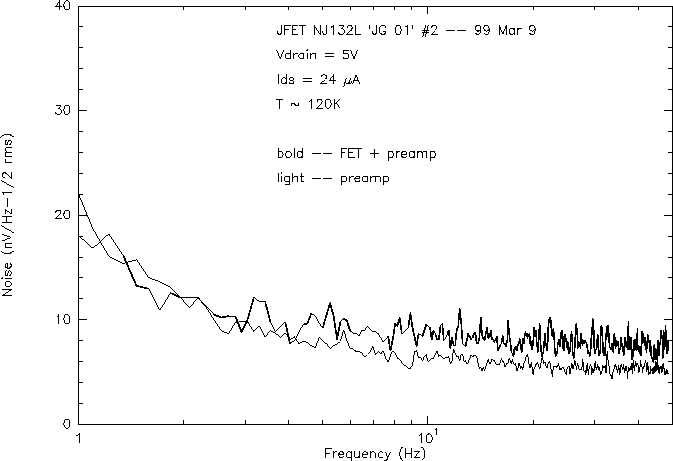 JFET #3
JFET #3
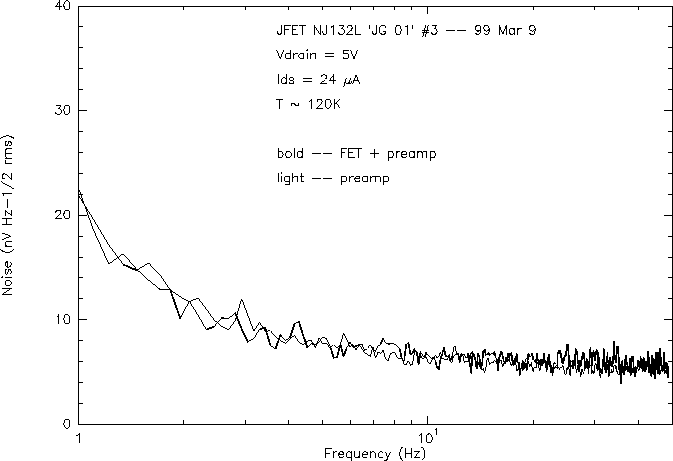 JFET #4
JFET #4
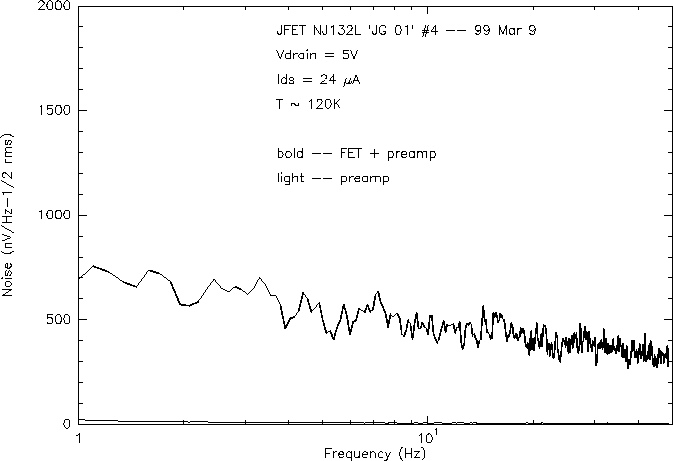 BAD!!!
JFET #5
BAD!!!
JFET #5
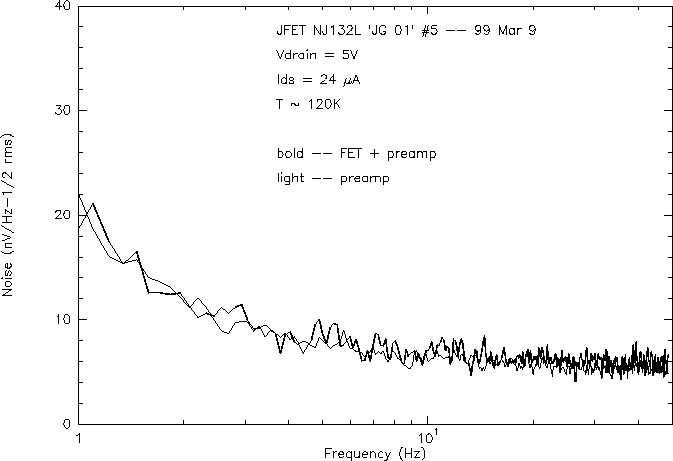 JFET #6
JFET #6
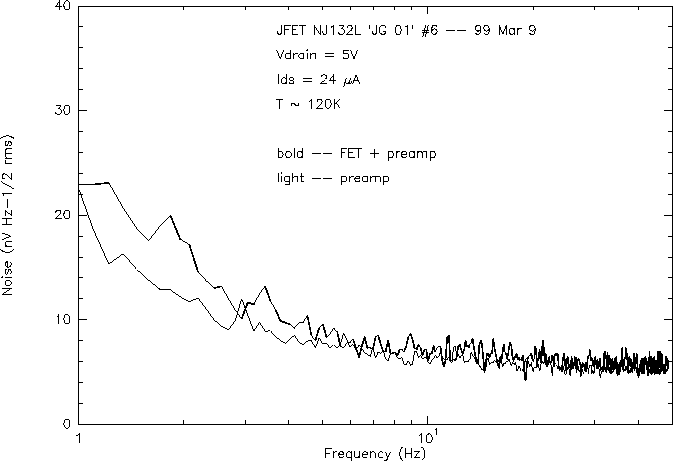 JFET #7
JFET #7
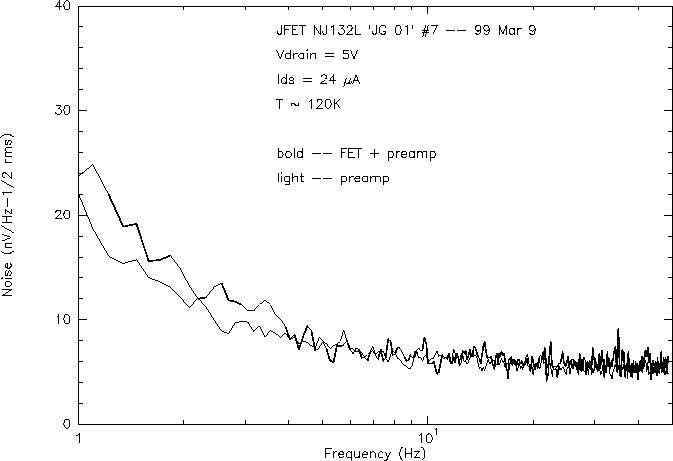 JFET #8
JFET #8
 JFET #9
JFET #9
 BAD!!!
BAD!!!
For the 7 decent FETs, the maximum JFET noise (with the preamp contribution
subtracted in quadrature) is approximately 10 nV/sqrt(Hz) at 3 Hz and
6 nV/sqrt(Hz) at 30 Hz (JFETs #2 and #8).
Transconductance
Instead of the transconductance g, I give the output impedance Z of the
JFETs. They are reciprocals: Z = 1/g.
The two very noisy JFETs had an output impedance at room temperature which was
far in excess of the other 7. The noisy JFETs had Z of 3470 and 3550
ohms, while the quiet ones had Z of 1160-1350 ohms. JFETs with a high value of
Z at room temperature should probably be discarded. From now on, only
the properties of the 7 quiet JFETs are discussed.
The Z at 110 K was somewhat lower and correlated with the Z at room
temperature:
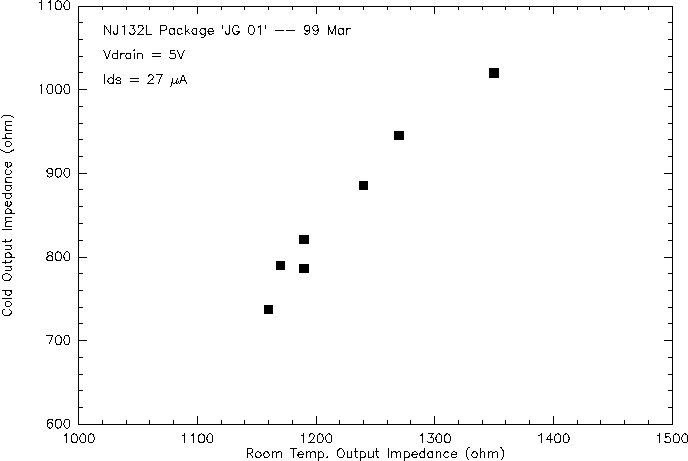
Source voltages
The sample of 7 FETs had a range of 0.46V in the source voltages at 110 K,
which is about a factor of 10 greater than allowable for SHARC2. The
cold source voltage is tightly correlated with the room temperature
source voltage:
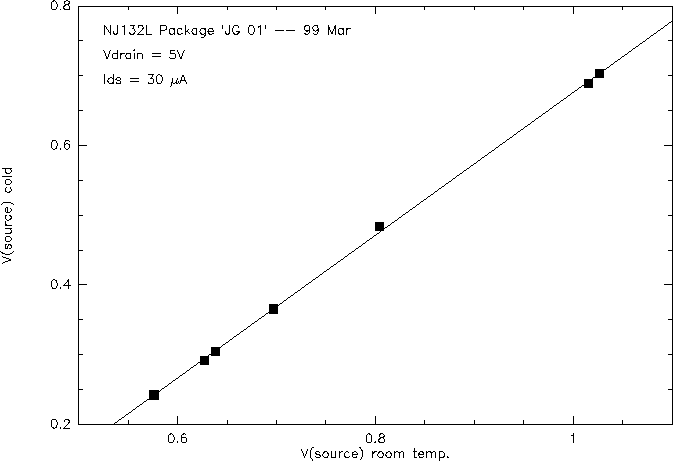
Last modified Monday, 17-May-1999 06:02 PDT
cdd@socrates.caltech.edu




 BAD!!!
BAD!!!




 BAD!!!
BAD!!!

